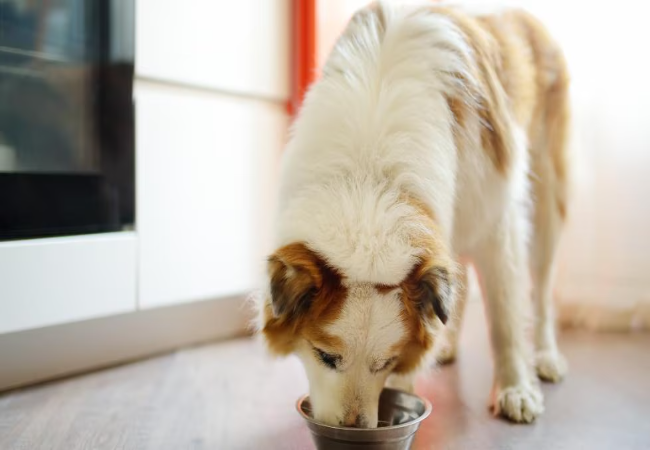How to Switch Your Dog’s Food: A Vet’s Guide for a Smooth Transition (2025) 🐶🍽️

In this article
How to Switch Your Dog’s Food: A Vet’s Guide for a Smooth Transition (2025) 🐶🍽️
By Dr. Duncan Houston BVSc
Hello—I’m Dr Duncan Houston BVSc, veterinarian and founder of Ask A Vet. Updating your dog’s diet is a normal part of pet care—whether for life stage changes, weight management, food sensitivities, or allergies. But abrupt switches can cause digestive upset. This et‑approved guide helps you:
- Identify when it’s time to switch
- Use a gentle transition schedule (5-day plan)
- Troubleshoot common GI issues
1. When Should You Consider Changing Food?
- Life stage changes: Puppy → adult (around 9–24 months depending on size)
- Health concerns: Allergy, digestive upset, dull coat, obesity
- Environment or sourcing: Recall, ingredient preference, vet recommendation
2. Why a Gradual Switch Matters
Sudden food changes disrupt gut balance, often triggering vomiting, diarrhea, gas, or anorexia. A gradual transition helps your dog adjust without GI distress.
3. 5‑Day Transition Plan
- Day 1: 20% new food + 80% old
- Day 2: 40% new + 60% old
- Day 3: 60% new + 40% old
- Day 4: 80% new + 20% old
- Day 5: 100% new food
Continue current feeding frequency—puppies 2–3× daily, adults 1–2× daily. If you notice digestive upset, slow down the transition by maintaining ratios for 2–3 days or test a gentler 10–15% increment.
4. Troubleshooting GI Upset
- Diarrhea, vomiting, gas: Pause and revert to previous ratio for 2–3 days
- Refusal to eat: Try mixing in warm water or flavor enhancer; if appetite doesn’t return in 24h, consult your vet
- Strong pickiness: Some dogs need even slower transitions or are sensitive to specific ingredients; Ask A Vet can help identify allergy triggers
5. Choosing the Right New Food
- Must be AAFCO‑approved and meet your dog’s life stage
- For sensitive dogs, look for limited‑ingredient formulas, specific protein sources, or prescription diets
- Work with your veterinarian or a board‑certified nutritionist if your dog has special health needs
6. Supporting Your Dog During the Switch
- Ask A Vet App: Send updates, photos/videos, and get advice if your dog shows any concerning signs.
📌 Final Thoughts from a Vet
A smooth transition is key to keeping your dog comfortable and healthy. Use a gradual 5-day plan, monitor for any digestive upset, and slow down adjustments if needed. Support your pup with enrichment tools and telehealth guidance when they need it most. If GI issues persist beyond 2–3 days or you’re unsure which formula is right, Ask A Vet is ready to help. 🐾❤️






